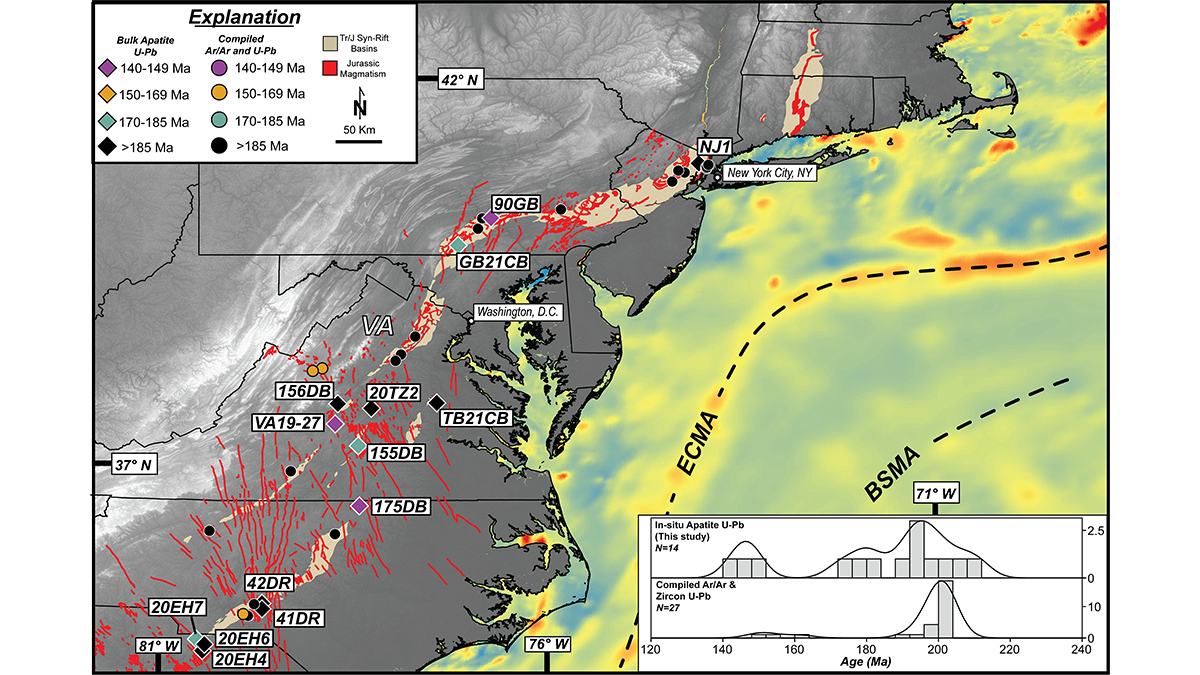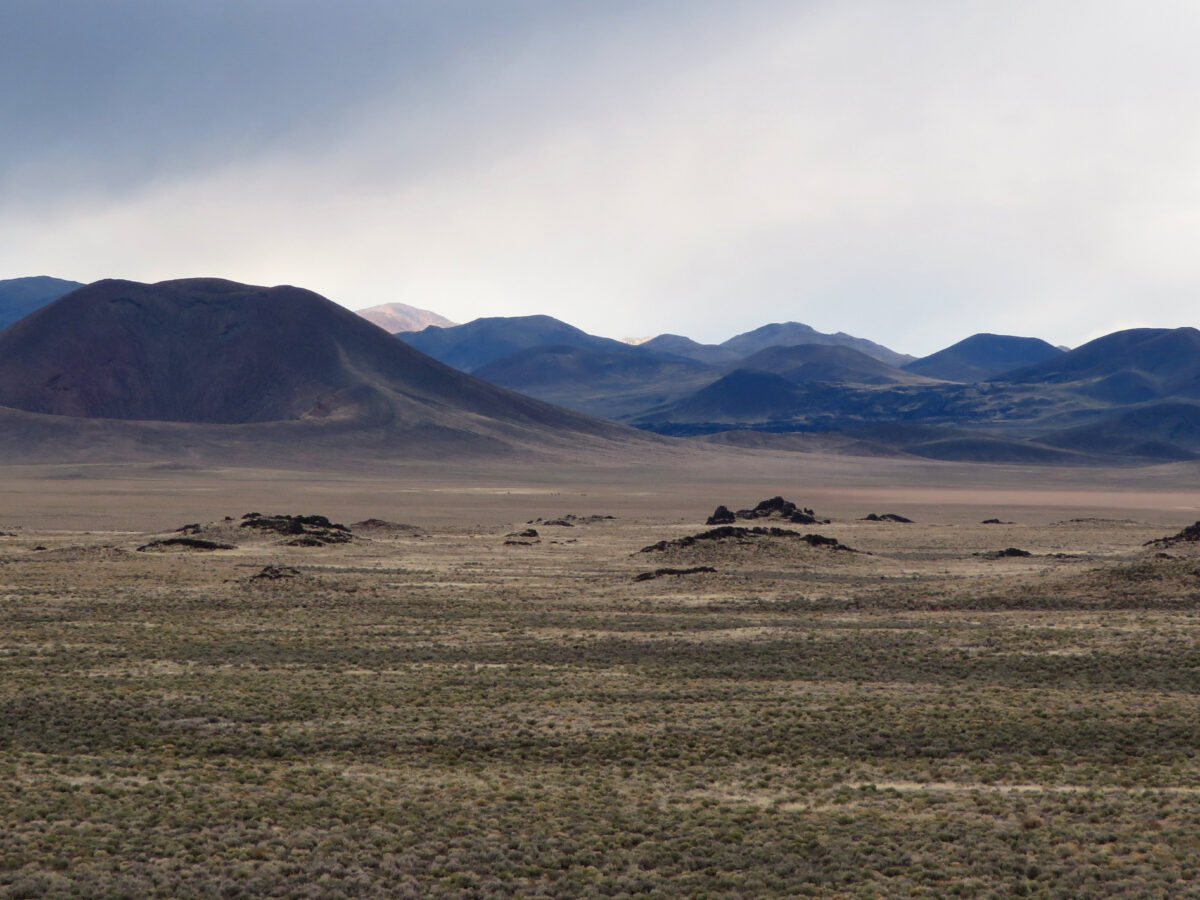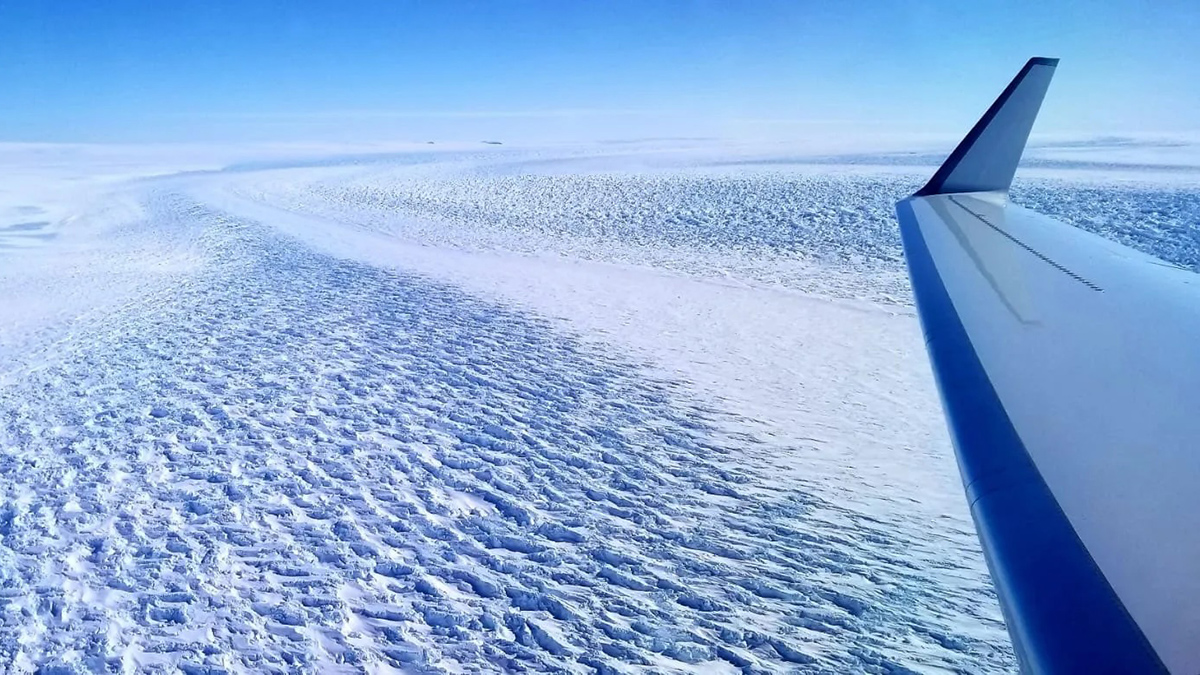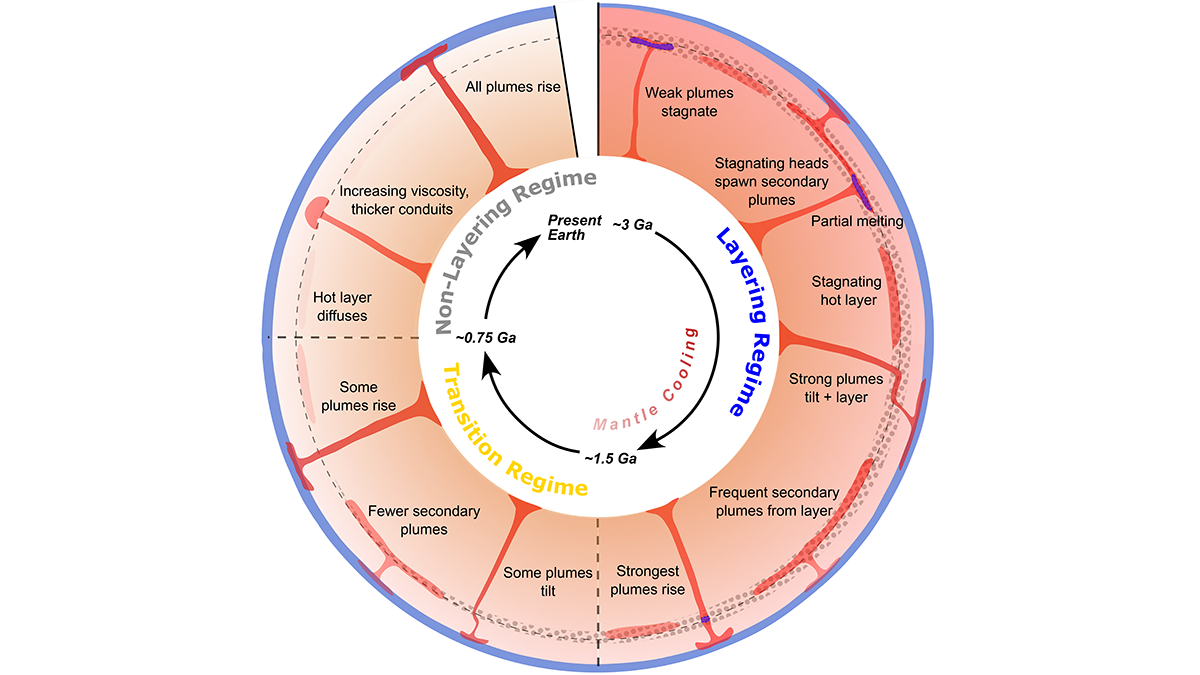A new study offers insight into the viscous BLOBs at the base of Earth’s mantle.
Geochemistry, Geophysics, Geosystems
Three Magmatic Pulses Helped Rifting Transform into Seafloor Spreading
A new geochronology of Mesozoic magmatism along the eastern margin of North America shows that continental breakup involved three distinct pulses of magmatism that localized extensional deformation.
Coupled Isotopes Reveal Sedimentary Sources of Rare Metal Granites
Using coupled isotopes, a new study shows that a class of economically important granites are derived by sediment melting without mantle input.
Water Stored in the Mantle for Millions of Years May Be Linked to Continental Volcanism
New research shows that intraplate volcanism is more likely to occur over areas of the mantle that are more hydrated—particularly those that have been hydrated for a long, long time.
A Seafloor Spreading Slowdown May Have Slashed Sea Levels
Between 15 million and 6 million years ago, a drop in ocean crust production may have lowered sea level by 26–32 meters.
Modeling Mantle Dynamics as the Earth Slowly Cools
An update of the convection code ASPECT enables full coupling of plume dynamics with buoyancy effects of transition zone phase relations, showing how early layering gave way to whole-mantle plumes.
Antarctic Ice Melt May Fuel Eruptions of Hidden Volcanoes
More than 100 volcanoes lurk beneath the surface in Antarctica. Ice sheet melt could set them off.
A New View of Deep Earth’s Carbon Emissions
Advances in plate tectonics research allow a deeper understanding of how greenhouse gases escape from within the planet.
Seismotectonic Update of the Philippines-Taiwan Region
Using more than two decades of data, scientists find that the Philippine and Taiwan subduction region is controlled mainly by shallow seismicity and low magnitude earthquakes.










